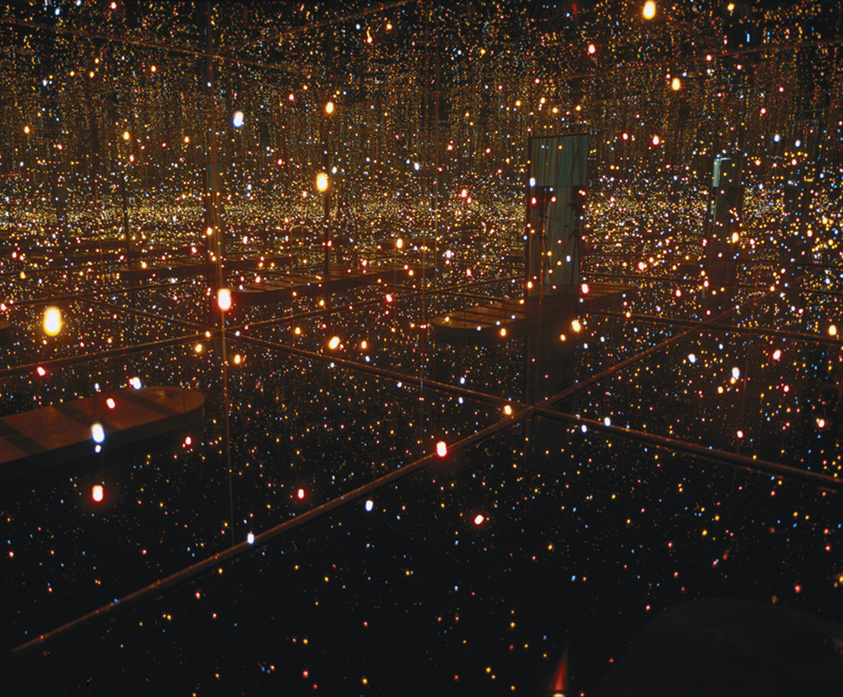0:00
Yayoi Kusama, Lingering Dream, 1949
0:00
Narrator: Kusama made Lingering Dream as a twenty-year-old studying painting in Kyoto. The landscape it presents to us seems more nightmare than dream. The foreground is crowded with red sunflowers. Some have fallen to the ground, their stems broken and contorted—an image that suggests human pain, not floral abundance.
War-torn landscapes preoccupied Kusama during the early years of her studies—unsurprisingly, since World War II had ended just a few years before. Flowers and vegetable growth were also a constant subject for her—and had been since she was a young girl. Her family made its money managing wholesale seed nurseries. Drawing the flowers for hours on end, she became an extremely skilled still life artist.
Over her mother’s objections, Kusama entered the Kyoto Municipal School of Arts and Crafts in 1948. There she took courses in Nihonga—literally, “Japanese painting.” By the mid-twentieth century, Nihonga had combined Japanese pictorial traditions with Western imports such as modeling and perspective. As the preferred style of the wartime dictatorship, it had also been tainted by nationalist politics. Kusama’s Nihonga training lingers here in the exquisite details. Notice especially the fine veins lacing the stems of the living flowers climbing at left. But the painting’s subject matter and the psychological intensity are all Kusama’s own. Very soon, she would reject the traditions and hierarchies of Nihonga all together.
